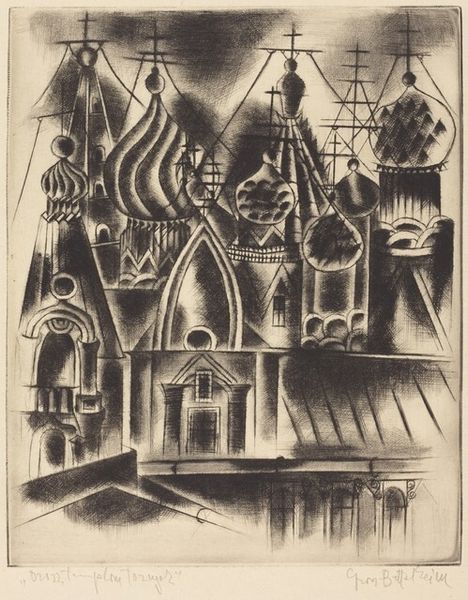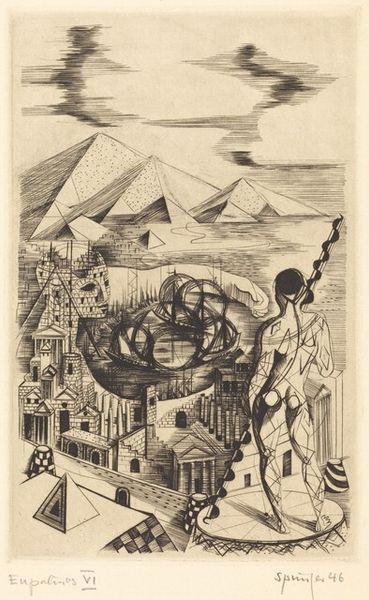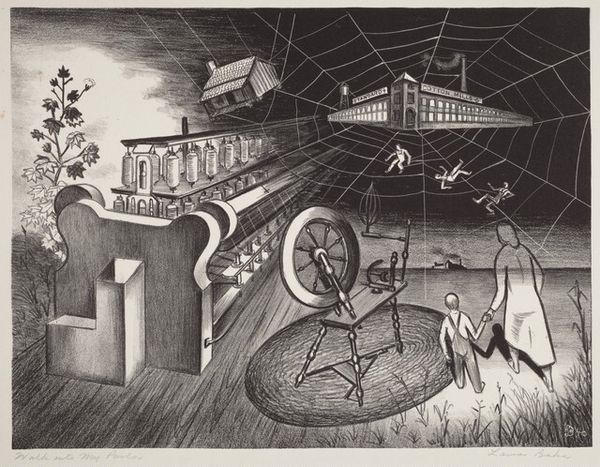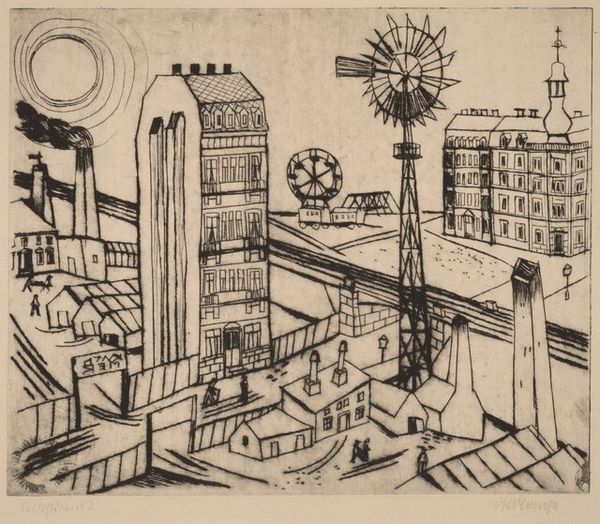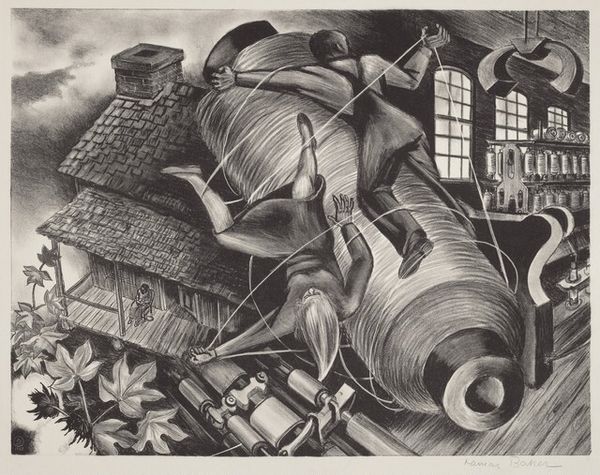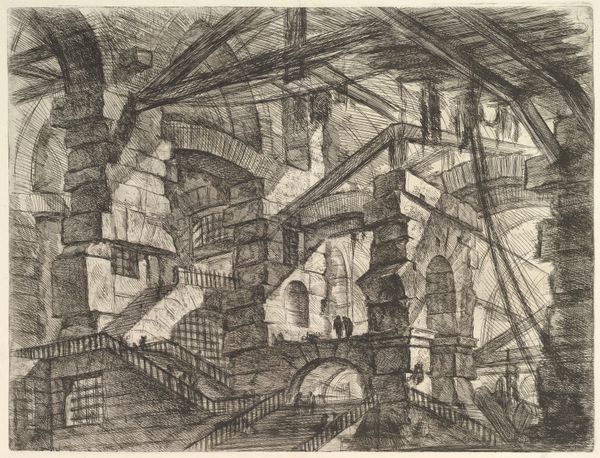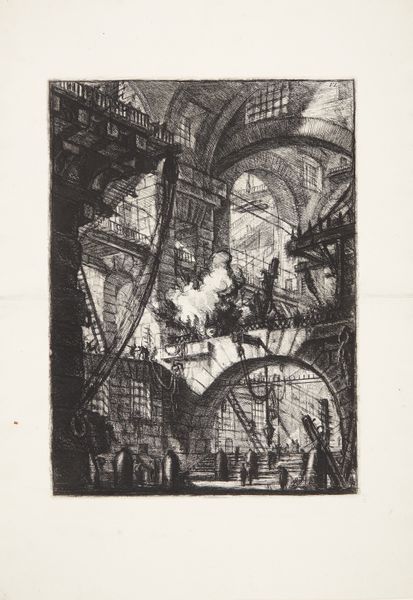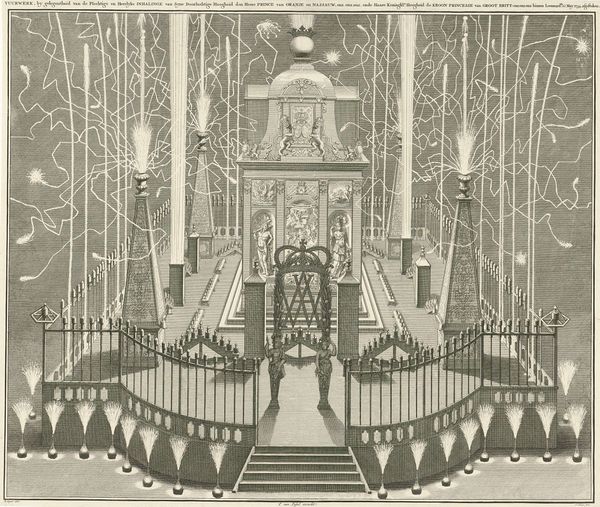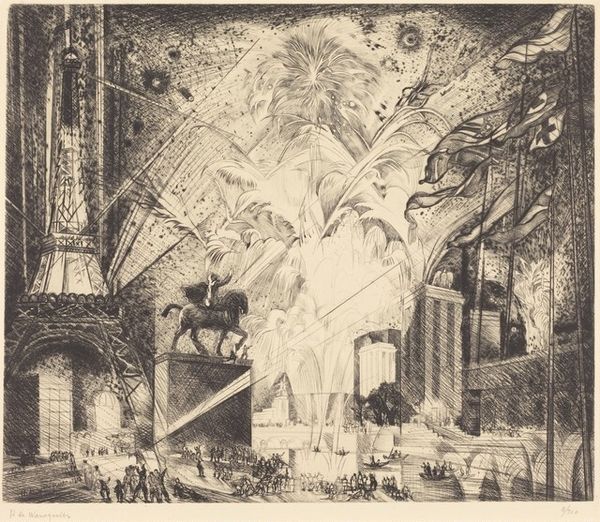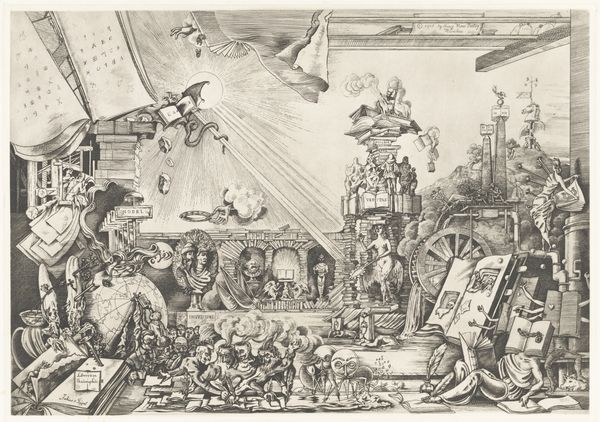
print, etching
#
quirky sketch
#
mechanical pen drawing
# print
#
pen illustration
#
pen sketch
#
etching
#
personal sketchbook
#
sketchwork
#
geometric
#
pen-ink sketch
#
pen work
#
sketchbook drawing
#
cityscape
#
storyboard and sketchbook work
#
surrealism
Dimensions: plate: 35.56 x 32.7 cm (14 x 12 7/8 in.) sheet: 39.05 x 35.4 cm (15 3/8 x 13 15/16 in.)
Copyright: National Gallery of Art: CC0 1.0
Curator: Here we have Lawrence Kupferman’s etching, "Fantasia Americana, 1880," created in 1943. What do you make of it? Editor: My first thought is that this feels like a dreamscape, slightly unsettling with that checkerboard floor tilted so dramatically. It’s like a stage set about to collapse. Curator: Interesting. Let’s consider Kupferman’s technique. As an etching, the lines are meticulously incised into a metal plate, likely copper, then inked and pressed onto paper. The textures achieved this way lend a certain gravity, don’t you think? Even to these floating balloons and that seemingly ghostlike structure at right. It emphasizes the handmade process. Editor: Absolutely. The sharp lines contribute to the dreamlike quality. Given the title references "1880" but it was created in the 40s, it's difficult not to wonder what cultural forces may have led Kupferman to conjure this collision of past and present – a strange mix of old locomotives and Victorian houses alongside floating balloons, all flattened into this almost stagey plane. What was he commenting on? Curator: The imagery suggests an invented history perhaps. The locomotive implies technological progress, while the architectural styles speak to social hierarchies of the past, all rendered through printmaking. Printmaking itself has democratic connotations – it allows for the wider dissemination of images. Is this a critique of American ideals? Editor: Perhaps. The "Americana" of the title feels heavily stylized, even fictionalized. The locomotive seems about to crash through the stately building adjacent to it. Is it industrial progress threatening establishment and traditional authority? The buildings feel somewhat unstable and on the verge of ruin, maybe Kupferman saw this looming threat to social stability. The unsettling arrangement almost makes the viewer confront this looming disaster. Curator: I think you may have nailed it. By looking at the techniques, we can better assess how the content might echo cultural anxiety and also broader issues related to distribution and readership. I'll be curious to see how others interpret that relationship between the visual components and their social associations within the United States in the mid 20th century. Editor: Likewise. And this makes me consider the way museums shape how such national identity pieces like Kupferman's, even those considered strange or satirical, find their place in shaping national conversations. Thank you, that has been illuminating.
Comments
No comments
Be the first to comment and join the conversation on the ultimate creative platform.


